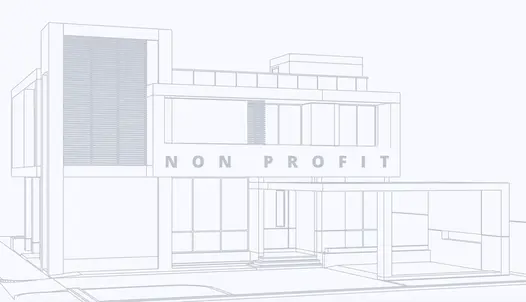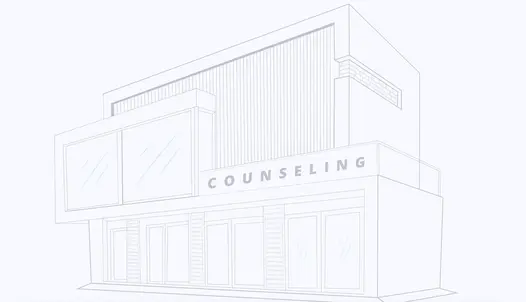Eszopiclone

Eszopiclone is a non-benzodiazepine sedative-hypnotic medication that is indicated for the treatment of insomnia among adults. It acts as a central nervous system (CNS) depressant, which means that it works by slowing down activity in the brain.
Common Trade Names: Lunesta, Estorra
Other Names: A-, zombie pills
Eszopiclone is a pyrrolopyrazine derivative of the cyclopyrrolone class. While it exerts the same effects as benzodiazepines, its chemical structure is different from benzodiazepines, barbiturates, and other hypnotic drugs.
The exact nature of how eszopiclone works is currently unknown, but experts believe its effect to be related to increases in the amount of gamma-aminobutyric acid (GABA), a substance that slows down the brain and makes it easier for an individual to sleep.
The United States federal drug scheduling system classifies eszopiclone as a Schedule IV controlled substance. That means that although eszopiclone has approved therapeutic uses, it also carries low abuse and dependence potential.
Why People Abuse Esczopiclone
Due to its nature as a CNS depressant, eszopiclone is commonly prescribed as a medication for sleep disorders. However, it is also being monitored as a drug that often factors into prescription abuse.
Like other potentially dangerous sleep medications, eszopiclone is abused because it yields feelings of restfulness, extreme calmness, well-being, or happiness when ingested.
How Eszopiclone Is Abused
Although there are some cases in which eszopiclone is sold on the streets, it is more often than not the subject of prescription abuse. Prescription abuse of eszopiclone can happen in the following ways:
- When someone takes the medicine in a way that is different from how it was prescribed
- When someone takes medicine that is prescribed for someone else
- When someone ingests the medicine specifically to get high
Esczopiclone typically comes in the form of a white or blue pill and is taken orally.As a drug of abuse, it is also sometimes crushed and inhaled (“snorted”).
Drugs That Interact with Eszopiclone
Eszopiclone may induce serious side effects when it is taken alongside other drugs. Substances that are known to interact with eszopiclone include the following:
- Ethanol. Combining eszopiclone with alcohol is known to cause additive psychomotor impairment.
- Antipsychotics. When taken with antipsychotics such as olanzapine and haloperidol, eszopiclone may slow down the function of the human brain even further.
- Muscle relaxants. Pairing eszopiclone with muscle relaxants like cyclobenzaprine or baclofen may also hamper brain function.
- Heart drugs. Using eszopiclone alongside drugs like diltiazem or verapamil can increase the risk of experiencing side effects associated with both the sedative-hypnotic medication and the heart medication.
- Antibiotics. Taking eszopiclone with certain antibiotics, such as clarithromycin and erythromycin, may also induce increased side effects for both the sedative-hypnotic and antibiotic drug.
Immediate Side Effects of Taking Eszopiclone
Common short-term side effects that are associated with taking eszopiclone are the following:
- Drowsiness, even in the daytime
- Dizziness
- Feelings of lightheadedness
- Headaches
- Loss of coordination
- Flu-like symptoms like runny nose or sore throat
- Dry mouth
- Unpleasant taste lingering in the mouth
- Nausea
- Vomiting
- Strange dreams
- Problems with memory
- Slurred speech
- Decrease in sexual desire
- Painful menstruation in women
Side effects of eszopiclone that may point to a serious adverse event include the following:
- Allergic reactions (rashes, hives, difficulty breathing, swelling, hoarseness)
- Confusion
- Hallucinations
- Suicidal ideation
- Fatigue
Eszopiclone is also known to induce complex sleep behaviors, or everyday activities that people do while they are actually asleep. In some cases, those who engage in these complex sleep behaviors may not even remember that they did so.
These complex sleep behaviors can sometimes be quite dangerous, as there is additional risk of the person hurting or negatively impacting themselves or others (i.e. if they fall down the stairs, burn themselves while using an appliance, or get into a car accident) when they are not fully conscious.
Some examples of complex sleep behaviors that are associated with eszopiclone use are the following:
- Sleepwalking
- Cooking and eating meals while asleep
- Sleep-driving
- Making phone calls while asleep
- Having sex while asleep
Long-Term Side Effects of Taking Eszopiclone
Chronic use of eszopiclone may result in some of the adverse long-term side effects associated with sleeping pills, including the following:
- Rebound insomnia
- Disruptions to normal sleep architecture
- Cognitive impairment
- Development of a tolerance to the drug
Symptoms of Eszopiclone Overdose
It is also possible for someone to overdose on eszopiclone. The telltale signs of an eszopiclone overdose include:
- Exaggerations of the pharmacological effects of the drug
- Somnolence or excessive drowsiness
- Comatose condition
Signs of Eszopiclone Addiction
To help health providers diagnose whether a patient has developed a substance use disorder like eszopiclone addiction or another type of sedative-, hypnotic-, or anxiolytic- (SHA) use disorder, the Diagnostic and Statistical Manual of Mental Disorders, Fifth Edition (DSM-5) provides a set of 11 criteria. Fulfillment of these 11 criteria from the DSM-5 may determine that someone is indeed suffering from an addiction:
- Consumption of larger amounts of eszopiclone or consumption of eszopiclone for longer than one intends
- Difficulty stopping eszopiclone use, even if one intends to or has repeatedly tried to do so
- Spending excessive amounts of time either buying eszopiclone, using eszopiclone, or recovering from eszopiclone use
- Experiencing strong cravings for eszopiclone
- Difficulty managing one’s personal commitments or responsibilities because of eszopiclone use
- Repeated eszopiclone use despite negative impact on personal relationships
- Abandoning important activities because of eszopiclone use
- Continued use of eszopiclone even when it puts the person in danger
- Continued use of eszopiclone despite the drug worsening the person’s physical or psychological issues
- Developing a tolerance for eszopiclone, or needing more of the drug in order to achieve the same effect as before
- Developing withdrawal symptoms upon suddenly ceasing the use of eszopiclone
Symptoms of Eszopiclone Withdrawal
Chronic users of eszopiclone may eventually develop a dependence on the drug. If they suddenly stop taking eszopiclone, they may experience eszopiclone withdrawal symptoms like the following:
- Feelings of anxiety
- Strange dreams
- Stomach or muscle cramps
- Nausea
- Vomiting
- Body shakes
- Excessive sweating
- Seizures
It is important for someone to be able to distinguish eszopiclone dependence from eszopiclone addiction, as the terms are not interchangeable. Eszopiclone addiction is a medical condition that is characterized by compulsive use of the drug despite harmful consequences, while eszopiclone dependence simply refers to how the body has adapted to the frequent presence of the drug.
If you’ve become dependent on a drug like eszopiclone, you should seek a timely intervention from a medical detox facility. Undergoing a detox program can help minimize your chances of experiencing acute withdrawal symptoms, and you’ll also be able to gradually remove the drug from your system.
Eszopiclone Detoxification
A patient’s eszopiclone detoxification will be overseen by medical doctors and nurses. These staff will rely on evidence-based practices to help patients get through their withdrawal symptoms.
If you undergo eszopiclone detox, you can expect the treatment process to go something like this:
- Your vitals, such as your pulse and blood pressure, will be monitored by staff.
- Doctors and nurses will administer supportive measures, such as inserting intravenous fluids, as needed.
- The medicine Flumazenil, which is a benzodiazepine antagonist, may be administered to reverse the central nervous system effects of eszopiclone.
- Doctors may employ a stepped-care approach to slowly taper down the amount of eszopiclone in your system and safely wean your body off the drug.
Eszopiclone Addiction: Rehabilitation and Treatment
Substance use disorder can be a very challenging time in your life, and it will definitely help if you seek professional help. If you need to undergo medical treatment for your eszopiclone addiction, there are two treatment models you can typically pursue: inpatient care and outpatient care.
- Outpatient eszopiclone addiction treatment. Outpatient eszopiclone addiction care, which is the less intensive of the two treatment options, is best for patients who have been diagnosed with only mild cases of eszopiclone addiction. Outpatient care may also be the better option for you if you can count on a supportive healing environment back at home. In this arrangement, you don’t need to live inside of a treatment facility for the duration of your eszopiclone addiction treatment program. You can go home after appointments, therapy sessions, or drug education classes, and you can also work or go to school when you don’t have an appointment.
- Inpatient eszopiclone addiction treatment. Inpatient eszopiclone addiction treatment is the more intensive treatment option and is the ideal arrangement for those with moderate to severe addiction problems. It is also the recommended course of action for those who have a history of non-compliance with previous treatment arrangements. If you receive inpatient eszopiclone addiction care, you will need to stay in a treatment facility 24/7, just like how you would be checked into a hospital for the treatment of a serious condition. You will be guaranteed round-the-clock medical care and a stable, focused environment to help you concentrate on your addiction treatment.
Research on the best pharmacological treatments for prescription CNS depressants like eszopiclone is still ongoing, but supportive treatments for the patient’s physical and psychological conditions will likely be administered. It is particularly important for doctors to treat any co-occurring substance use disorder that has happened alongside the patient’s eszopiclone addiction, such as addiction to alcohol or opioids.
The patient should also undergo recommended behavioral treatments to help them identify and control their triggers for eszopiclone abuse. These include cognitive behavioral therapy or CBT, contingency management, individual or group therapy, and individual counseling sessions or counseling with others who have been affected by the substance use disorder, such as parents, siblings, children, and romantic partners.
Start Your Journey Towards Full Recovery
If you’re currently facing eszopiclone addiction, you may feel lonely, helpless, and guilty, like you have no one else to turn to, or that you will never be able to take control of your life again. But in truth, it is possible for you to surpass these feelings and reverse the effect that eszopiclone addiction has had on your life. Make the choice to get treated so that you can sleep healthily and live a happy and fully sober life with your loved ones.
To help you get the treatment you need, call Better Addiction Care at (800) 429-7690. You will immediately be able to speak with one of our trained recovery support advisors. We can help you find a local treatment center and verify your insurance status so that you can receive either inpatient or outpatient eszopiclone addiction care. If you’re not currently enrolled in any insurance plan, we can also assist you in narrowing down your available financing options.
A Brief History of Eszopiclone
Eszopiclone is a fairly new drug in the treatment of insomnia. It was approved by the US Food and Drug Administration in 2004. In 2005, it was introduced to the market under the brand name Lunesta.
In recent years, the FDA has become increasingly concerned about next-day impairment cases associated with the sleep aid, like those that involved sleep-driving. In light of these cases, the FDA lowered the recommended dose of the drug from 3 mg to 1 mg before bedtime.
Resources
Treatment Centers in Virginia
 123
123
 123
123
 123
123
